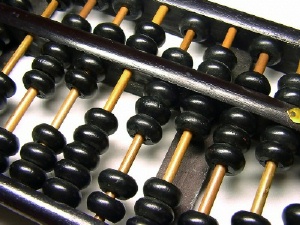|
|

Odds - The probability of an event occurring, usually expressed mathematically in the form of a ratio.
Probability theory is used in mathematics to define the likelihood that given events will or will not occur. It can be used to
construct complex advanced mathematical equations, but probability theory need not be complicated. Most of its applications to
poker game theory are pretty straight forward. At its
most basic level, probability theory can be used describe something as simple as the flipping of a coin.
In order to use probability theory to predict the odds of an event occurring, you need to know two things. The first thing that you
need to know is the total number of ways it is possible for your event to occur. Let’s say you are flipping a coin and have chosen
heads. Once you flip, there will be exactly one way in which the coin can come up heads. The second thing that you need to know is the
total number of possible events. When you flip a coin, we know that it can come up either heads or tails. So the total number of
possible events is two. You now have everything you need to calculate the probability that a coin flip will result in heads. You can
also express this as odds.
The formula for calculating simple probability is: (the number of predicted events) / (number of possible events) [possible events
equals predicted events plus non-predicted events]. In the case of our coin flip, our predicted event was that the coin would come up
heads. Since there was only one was for this to occur, the number of predicted events = 1. Total possible events include one way to
make heads and one way to make tails, or 2. So our equation is 1 / 2. But probability is written as a decimal, not a fraction. And 1
/2 = .5. So there is a .5 probability (also known as 50%) that a coin flip will result in heads.
In order to be written as odds, it needs to be reformulated again. Odds are written in ratio form of (predicted events) : (non
predicted events). With our coin flip we have 1 way to make heads (predicted events) and one way to make anything but heads (non
predicted events), so our ratio would read 1 : 1. Therefore, when you flip a coin, the odds of it landing on heads is 1 : 1, written
alternatively as 1 to 1.
Since a coin flip has only two possible outcomes, it offers a simplistic look at odds and probabilities. In a poker game, you have 52
cards in play, often with several players who are chasing multiple outs. This make it a little more complicated. To complicate things
further, there are different types of odds calculations that may be relevant to your situation, and you should know how and when to
apply each. Three different type of odds calculations are hand completion rates, pot odds calculations, and implied odds calculations.
All of this can seem a little overwhelming to a new player, but most of it is pretty straight forward, as you will see if you take a
moment to read about pot odds and implied odds. A rudimentary understanding of what odds are and how probability works is enough
background for you to quickly master these concepts.
There are charts and software programs available to help players understand “odds”.
Usage: Odds On Favorite, Long Odds, The Odds Were Against Me
Previous Poker Term: Nuts
Next Poker Term: Offsuit |
|









